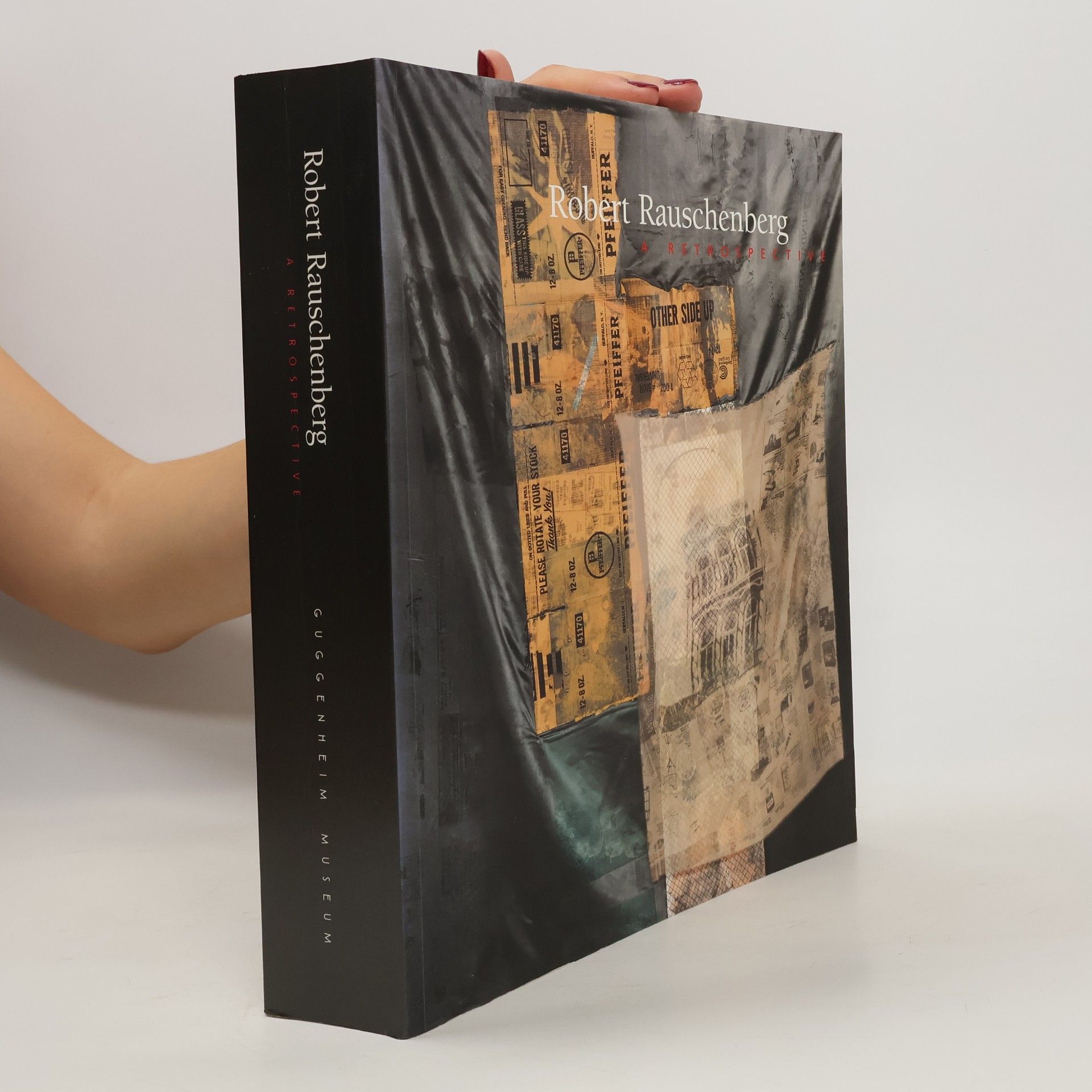Chefs-d'œuvre ?
- 570pages
- 20 heures de lecture
Chefs d'uvre L'exposition d'ouverture du centre Pompidou-Metz.
Robert Rauschenberg fut un peintre et graphiste américain dont les premières œuvres annoncèrent le mouvement Pop Art. Son approche artistique brouillait les lignes entre la peinture et la sculpture, incorporant souvent des objets trouvés et des matériaux du quotidien dans ses compositions. L'esprit expérimental de Rauschenberg et son intérêt pour le lien entre l'art et la vie en firent une figure centrale du changement de l'expression artistique au milieu du XXe siècle. Son œuvre continue de résonner par son innovation et sa capacité à transformer le banal en art qui pousse à la réflexion.






Chefs d'uvre L'exposition d'ouverture du centre Pompidou-Metz.
One of America’s most important artists, Robert Rauschenberg consistently fuses painting, found art, photography and printing in his works. Now available in paperback, this stunning book brings together sixty of Rauschenberg’s most exciting posters. Arranged thematically and chronologically, the posters display the full range of Rauschenberg’s stylistic development from the 1960s to the 1990s. Since 1963 the artist has been designing posters to advertise his own exhibitions, music and dance performances, and to address sociopolitical issues. This breathtaking volume features full page, color reproductions that allow the viewer to truly appreciate the complexity, ambiguity, and incredible scope of Rauschenberg’s oeuvre.
Iconoclastic American artist Robert Rauschenberg (1925–2008) shot over fifty rolls of film during his first trip to Beijing in 1982, resulting in his rare color photography work Study for Chinese Summerhall (1983). Just three years later, he became the first Western contemporary artist to exhibit in Mainland China after the Cultural Revolution as part of his Rauschenberg Overseas Culture Interchange (ROCI, 1985–91). The catalogue Rauschenberg in China, published on the occasion of the artist’s exhibition at the Ullens Center for Contemporary Art, Beijing, presents these projects alongside his The 1/4 Mile or 2 Furlong Piece (1981–98), a single artwork comprised of 190 parts made over nearly two decades. The catalogue reproduces this work in full for the first time, accompanied by essays by Helen Hsu, Robert Rauschenberg Foundation curator; Philip Tinari, UCCA director; Susan Davidson and David White, exhibition co-curators; Hiroko Ikegami, Kobe University professor; and Felicia Chen, UCCA assistant curator.
In the late 1940s, several prominent artists of the New York School--among them Robert Rauschenberg, Ad Reinhardt, Mark Rothko and Frank Stella--were intently studying the color black. That work, interrelated but not collaborative, resulted in an astonishing number of almost monochromatic black paintings, which today are considered treasures of many major collections, including the Whitney Museum of American Art's. For the first time, Black Paintings gathers all of the best of the title artist's black works textured black, striped black, blue-black, brown-black, black-black. In thorough illustration and thoughtful analysis, it sheds light on the differences between these postwar works as well as their commonalities. For Frank Stella and Robert Rauschenberg, black was a way to disappear into something new, a way to a new artistic vocabulary. For Mark Rothko, it stood for emptiness and nothingness; it asked the spectator to reflect back on it. For Ad Reinhardt, it offered denial and invisibility. Each artist's black portfolio reflects a breakthrough or transition in his own work, and, combined, they represent a larger moment of transition. The Black Paintings marked both a beginning and an the end of painting as illusion, as a window onto the world, and the beginning of painting as the mode for the creation of self-sufficient perceptual objects--a change that granted new roles to both artist and viewer.
Robert Rauschenberg (1925-2008) zählt zu den Vätern des amerikanischen Pop Art. Photographien sind ein elementarer Bestandteil seiner Arbeit. Sie tauchen unter anderem in großformatigen Collagen gefundener Objekte auf, in die er Zeitungsausschnitte, Photographien und Ausschnitte abstrakter Gemälde integriert. Er hat zeitlebens auch selbst photographiert: seine Familie, das Atelier, auf Reisen durch Europa, Künstlerfreunde wie Cy Twombly, Jasper Johns, Willem de Kooning und John Cage, das Spiel von Licht und Schatten auf Gesichtern, den menschlichen Körper und Alltagsgegenstände. Photos zu machen war für ihn Aneignung der realen Welt, die sein Leben und seine Kunst prägte und deren Reichtum man, wie er einmal sagte, nur einsammeln müsse. Unser Band zu Rauschenbergs Photographien ist ein wichtiges Dokument der Genie-Epoche in der amerikanischen Kunst des vergangenen Jahrhunderts. Den einleitenden Essay hat Nicholas Cullinan, Kurator an der Tate Modern, geschrieben